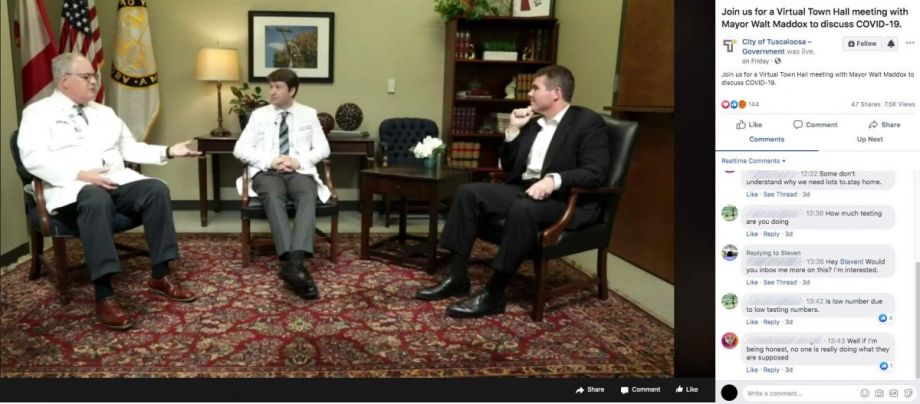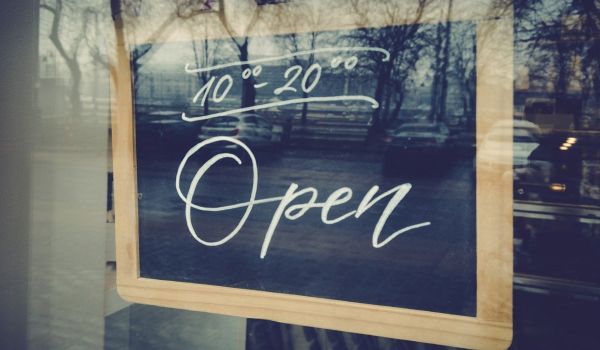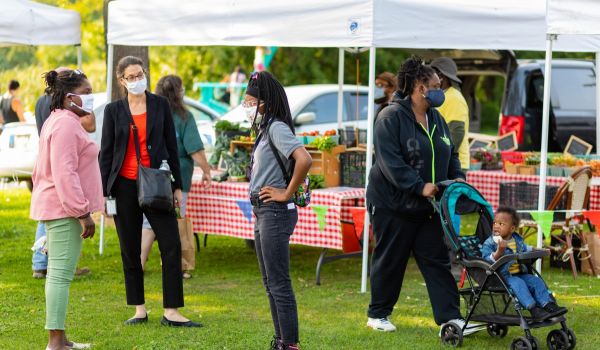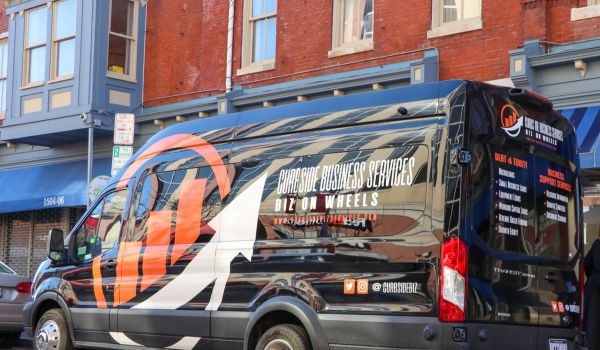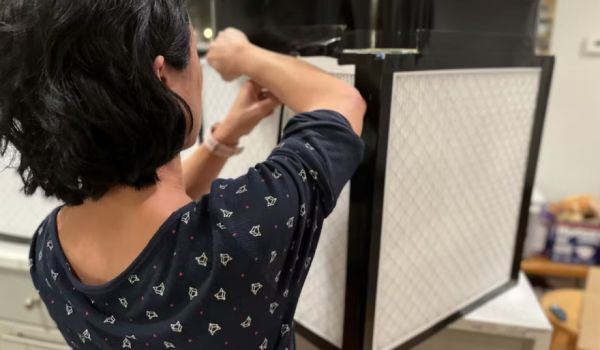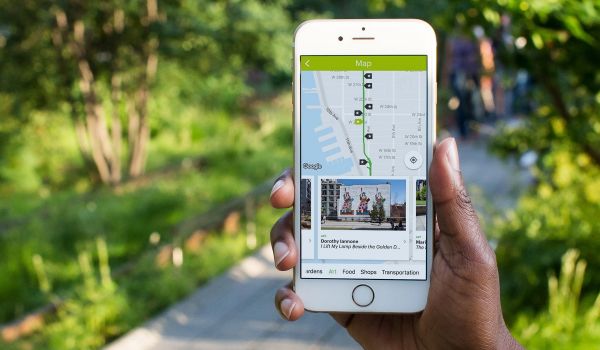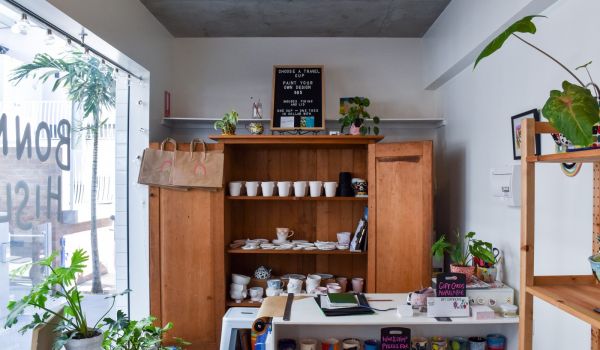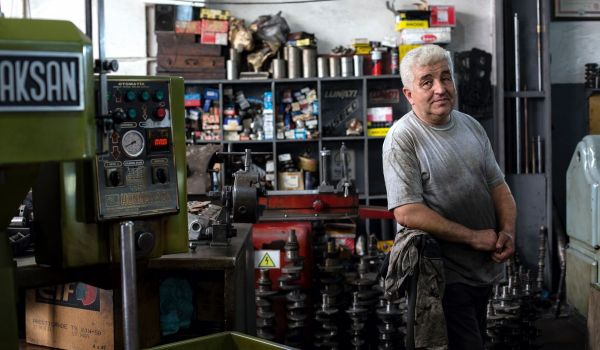As COVID-19 ravages through the United States, more people are turning to electronic forms of communication to bridge the social distancing gap. Facebook has seen a 50 percent increase in Facebook Live usage since January, and Zoom, a video conferencing software most commonly used in the workplace, now has 20 times more users than it did before the pandemic. Among their new users? State and local governments.
In the past three weeks, the governors of Michigan, Delaware, Texas, and Georgia, as well as the mayors of Louisville, Newark, Scranton, Oakland, Tuscaloosa, and other cities, have all hosted virtual town halls to share the latest updates on coronavirus policies and answer questions from their constituents at a safe distance. Some of these videos — which have been broadcast on Facebook, YouTube, Instagram, and Twitter — have attracted thousands of live viewers.
Mayor Walt Maddox of Tuscaloosa, Alabama, has raked in anywhere from 700 to 1,200 live viewers during the five Facebook Live town halls he’s filmed, says Richard Rush, his director of communications. “The mayor [had] asked me to find different ways we could reach out and still communicate one-on-one with our community, rather than just him spending hours upon hours on social media, trying to answer every question that comes his way,” Rush explains.
The virtual town halls, which are also broadcast through Twitter, local-access TV, and some radio stations, are less personable than their in-person counterparts, but the ability to get information out quickly came in handy on March 27, when Mayor Maddox extended curfew to 24 hours, closing all non-essential businesses in Tuscaloosa through April 11.
Later that day, the mayor, city attorney, and executive director of urban development convened online to explain the do’s and don’ts of a 24-hour curfew and answer questions submitted by residents over social media and the community website.
“When you’re heading up a crisis situation like this, you’re so deep into the details and figuring out a solution that a lot of the more base-level questions can be overlooked,” Rush says. “This [process] ensures that nobody’s left out.”
The city of Oakland, California, has also seen success with this model. According to Yvonna Cázares, director of community engagement, Mayor Libby Schaaf has seen an average of 6,000 to 7,000 views for each virtual town hall she has hosted. It’s required a bit of a learning curve — “Sometimes you’re building the plane as you’re flying it,” Cázares quips — but she’s conducted online meetings with faith leaders and community organizations in times of crisis before.
With every subsequent town hall, her team has been able to improve the tech, solicit more feedback from the community, and make the broadcasts available to a wider range of folks. For example, Cázares has started using Restream to distribute the town hall livestream on multiple platforms (including YouTube Live, Facebook Live, Zoom, Periscope, WeChat, and Instagram Live) and Thoughtexchange to manage, rate, and identify themes from the 200-plus coronavirus-related questions that Oakland residents submit. The latter helps determine what gets asked during the town hall.
However, not everyone can just hop onto Facebook or Zoom. As many as 13 percent of Americans don’t have access to broadband internet, according to Broadband Now. You don’t need an internet connection, for example, to see your local official at the town hall in your local church or library community room.
Each of the mayors’ representatives said they have made strides on this issue by incorporating more traditional modes of communication. Rush says that many people have tuned into the virtual town halls by listening to the radio while at work, which has given folks whose shifts conflict with in-person meetings another way to be engaged. Cázares has been working with grassroots organizations who have coordinated 200 volunteers to call seniors and patch them into the Zoom conference lines.
“I want to push back on people who are thinking that we’re disenfranchising the disenfranchised,” Cázares say, referencing potential criticism for hosting an online meeting. “That is not what we are seeing. I think [the virtual town halls] have been great at bringing more engagement.”
The cities have also increased accessibility in other ways. Rush is looking to add closed captioning and translations in American Sign Language and Spanish to the City of Tuscaloosa livestreams. Eventually, too, the mayor will be able to answer questions from callers and Facebook Live viewers, rather than rely on pre-submitted questions.
Cázares says she has already engaged Spanish, Korean, Chinese, and Vietnamese interpreters for the town halls, along with distributing translated info to community organizations before and after each event. Because so many public servants across the country are now scrambling with their own workplace closures, Cázares has opened up her calendar to host virtual town hall trainings for government workers. One of her recent trainings attracted 200 signups from public employees in Portland, Minneapolis, Denver, Washington, D.C., and other cities.
“Online is not a substitute for in-person engagement,” Cázares says. “It’s just an additional tool — it’s a complement, it’s a ‘both-and.’ It felt good in the last week or two to demonstrate what Oakland has been doing for the last two years, and how people can do that now during the crisis.”
Two weeks ago, Atlanta city councilmember Amir Farokhi, who represents Midtown, the Old Fourth Ward, and other neighborhoods in District 2, decided to host his own virtual town hall series to address questions from his constituents. Within 48 hours, his staff scheduled three Zoom meetings for various interest groups in the district, including small businesses and hospitality, residents, and the arts and culture community.
Farokhi was surprised to see 350 people join across the three times. Using Zoom’s webinar feature, he presented the latest COVID-19 updates from federal, state, and city officials, along with resources for struggling businesses and residents. Afterward, he opened up the floor for questions, un-muting people as needed.
Participants were more forthcoming than expected, asking 20 to 40 questions per event. “One of the benefits [of virtual town halls] is, I think, people are far more willing to ask questions,” Farokhi says. “In a public meeting where oftentimes there can be groupthink, people may feel intimidated or not want to ask a question publicly. This really just levels the playing field.”
Farokhi also noticed some unfamiliar names on the RSVP list. “I represent somewhere between 45,000 and 50,000 people, and I probably hear from the same 300 people all the time, which is a very small proportion of the residents I represent,” he says, adding that those people tended to be affluent homeowners. This meant that most of the residents, businesses, and organizations participating in these virtual town halls had never before contacted his office.
“So, one, I said that we should have done this earlier” — he laughs — “but two, [I thought] it was really effective in lowering the bar for communicating with a local elected representative.”
When the pandemic ends — and it will end at some point — most emergency measures that governments passed will likely be stripped away as people return to a semblance of normalcy. This perhaps-unprecedented level of access to their representatives, however, may not go away so easily.
“My sense is that this will become the norm for elected officials at every level and residents will expect this type of interactivity,” Farohki said. “If we’re not using these virtual tools to connect with residents, we are really limiting the amount of civic engagement that we should be fostering.”

